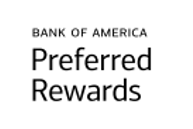The larger your down payment, the more likely you are to qualify for lower interest rates. This will also help to lower your overall monthly payment. We recommend your down payment be at least 5% of the purchase price.
If your down payment is at least 20% of the property price, you typically won't have to pay for private mortgage insurance (PMI), which is required by some loan types.
Bank of America offers low down payment loans and programs to help with down payment and closing costs, including our 3% down, no mortgage insurance Affordable Loan Solution® mortgage and America’s Home Grant®, which provides eligible borrowers up to $7,500 for nonrecurring closing costs. Connect with a lending specialist for details.

